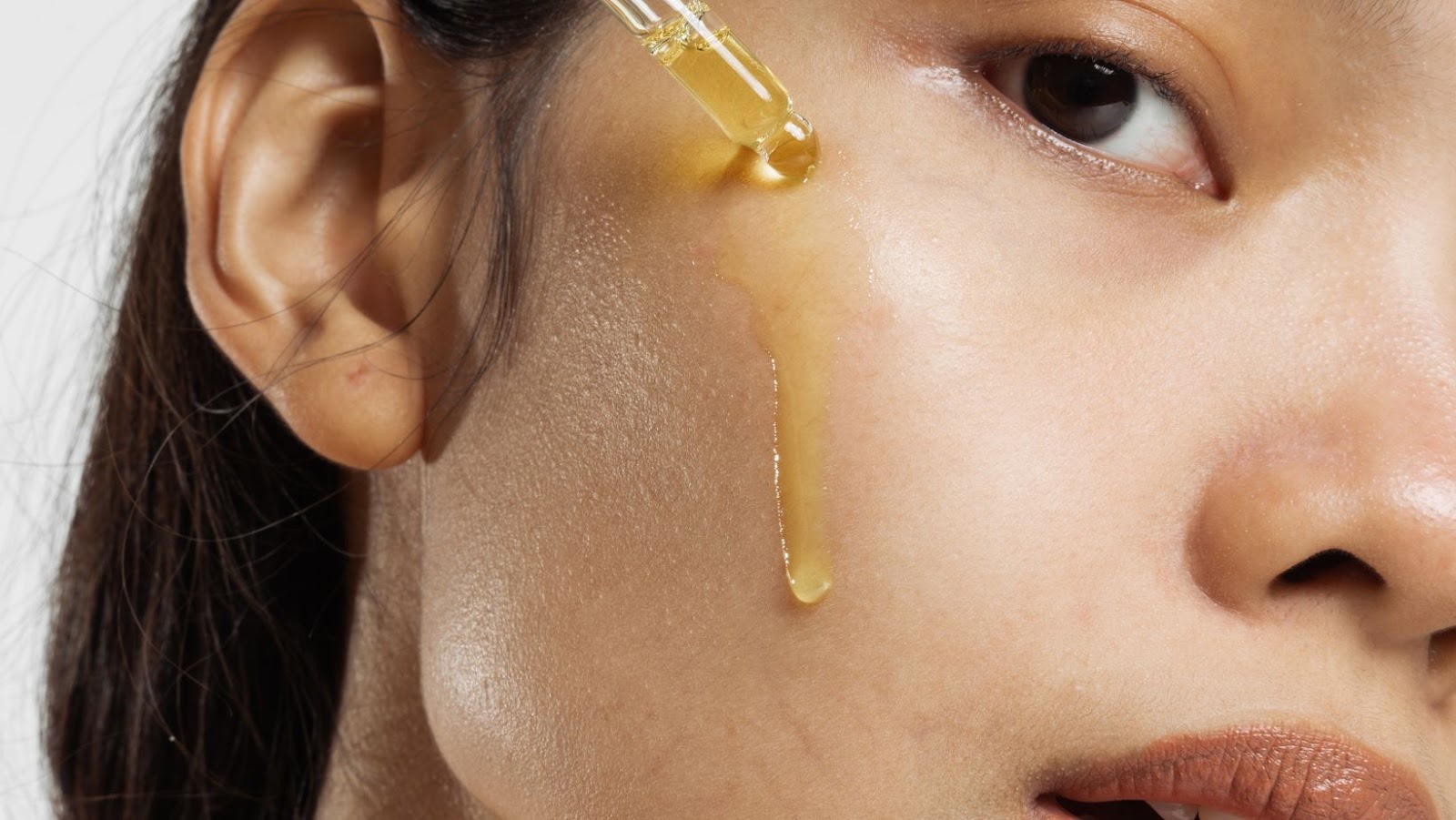When it comes to skincare routines, one product that often gets overlooked is face oil. Many people assume that it will make their skin oily or cause breakouts, but that’s simply not the case. In fact, using face oil correctly can actually improve your skin’s health and appearance.
So, how exactly should you use face oil in your skincare routine? First, it’s important to choose the right oil for your skin type. Oils like rosehip and jojoba work well for most skin types, while drier skin might benefit from something richer like avocado or argan oil. Once you’ve chosen your oil, apply 2-3 drops to your face after cleansing and toning. Gently massage the oil into your skin using upward motions until it’s fully absorbed.
Using face oil in your skincare routine can provide numerous benefits. It helps to lock in moisture, soothe irritated skin, and even fight acne and other blemishes. Plus, it can help your other skincare products work more effectively. Just be sure to choose the right oil for your skin type and follow the proper application method to get the most out of this powerful and often overlooked skincare product.

How to Use Face Oil in Skincare Routine
Using face oil can be a game-changer in your skincare routine. It may seem counterintuitive to add oil to your face when you are trying to keep it clean and clear, but oils can provide a lot of benefits for your skin. Here are a few advantages of using face oil in your skincare routine:
- Hydration
One of the main benefits of using face oil is that it can help to hydrate your skin. Sometimes, even with the best moisturizers, your skin can still feel dry and dull. Using a face oil can help lock in moisture and keep your skin hydrated throughout the day.
- Nourishment
There are many different types of face oils, and each one has different benefits for your skin. Some oils, like jojoba or grapeseed oil, can provide nourishment for your skin. These oils contain vitamins and antioxidants that can help improve your skin’s texture and appearance.
- Anti-Aging
Another benefit of using face oil is that it can help with anti-aging. Some oils, like rosehip or argan oil, have been shown to reduce the appearance of fine lines and wrinkles. These oils contain fatty acids and other nutrients that can help promote healthy skin and prevent signs of aging.
- Acne-Fighting
Using oil on your face may sound like a recipe for a breakout, but certain types of face oils can actually help fight acne. Tea tree oil, for example, has antibacterial properties that can help kill acne-causing bacteria. Other oils, like grapeseed or evening primrose oil, can help regulate oil production, which can also help prevent breakouts.
When using face oil in your skincare routine, it’s important to choose the right oil for your skin type. Oils that are too heavy or rich can clog pores and cause breakouts, while lighter oils may not provide enough hydration. Experiment with different oils to find the one that works best for your skin.
In conclusion, adding face oil to your skincare routine can provide a boost of hydration and nourishment for your skin, as well as help fight signs of aging and acne. Remember to use it in moderation and only select oils that work best for your skin type.

When and How to Apply Face Oil in Your Skincare Routine
Using a face oil as a part of your skincare routine can be a game-changer when it comes to achieving and maintaining healthy, glowing skin. It can provide an extra layer of hydration, nourishment, and protection to your skin. However, it is important to know when and how to apply face oil properly to reap its benefits.
When to Apply Face Oil in Your Skincare Routine
One of the most important things to consider when using face oil in your skincare routine is when to apply it. Face oil should be the last step in your skincare routine after you have cleansed, toned, and moisturized your skin. Applying your face oil before your moisturizer can prevent the moisturizer from effectively absorbing into your skin.
Another good time to apply face oil is at night before going to bed. This allows the oil to work its magic overnight when your skin is in its rest and repair mode.
How to Apply Face Oil in Your Skincare Routine
When it comes to applying face oil, less is more. Start with only a few drops and add more if needed. Take two or three drops of face oil in your palms, rub them together, and gently press and pat the oil onto your face. Do not apply face oil in a circular motion, as it can tug on your skin.
If you have oily skin, consider using face oil as a treatment, applying it only a few times a week, or mixing it in with your moisturizer to avoid feeling too greasy.
Keep in mind that not all face oils are created equal, and some may work better for your skin type than others. Always read the label and research the ingredients before purchasing a face oil to ensure it is compatible with your skin.
By following these simple tips and incorporating face oil into your skincare routine, you can achieve healthy, radiant, and nourished skin.

Choosing the Right Face Oil for Your Skin Type
When it comes to choosing a face oil for your skin type, it can be overwhelming to know where to start. With so many options on the market, it’s important to understand what types of oils will work best for your specific needs. Here are a few key things to keep in mind when selecting a face oil for your skincare routine:
Consider Your Skin Type
The first step in choosing a face oil is determining your skin type. Different skin types will require different types of oils to achieve the best results. Here are some general guidelines to keep in mind:
- Dry Skin: Look for oils that are rich in nourishing fatty acids, such as argan, avocado, or jojoba oil.
- Oily Skin: Choose lightweight, non-comedogenic oils that won’t clog pores, like grapeseed or rosehip oil.
- Combination Skin: Use a lighter oil on your T-zone, such as jojoba or hazelnut oil, and a richer oil on drier areas, like your cheeks or neck.
- Sensitive Skin: Opt for gentle, non-irritating oils, such as chamomile or calendula oil.
Look for Specific Benefits
In addition to your skin type, consider what specific benefits you’d like your face oil to provide. Some examples might include:
- Anti-Aging: Look for oils that are high in antioxidants and omega-3 fatty acids, such as rosehip or argan oil.
- Acne-Prone Skin: Seek out oils that have antibacterial properties, like tea tree or jojoba oil.
- Hyperpigmentation: Look for brightening oils, such as vitamin C or rosehip oil.
Choose a High-Quality Oil
When selecting a face oil, it’s important to choose a high-quality, pure oil that hasn’t been mixed with other ingredients. Look for options that are cold-pressed or steam-distilled, as these methods help to preserve the oil’s natural properties. Additionally, be wary of oils that are heavily fragranced or contain additives like mineral oil, which can clog pores and lead to breakouts.
By considering your skin type, desired benefits, and the quality of the oil, you can choose the perfect face oil to incorporate into your skincare routine. Remember to always patch test a new oil before applying it to your entire face and to introduce new products slowly to avoid irritation. With these tips, you can unlock the many benefits of face oil and create a glowing, healthy complexion.
Conclusion
That was a comprehensive guide to incorporating face oil into your skincare routine! I hope the information provided helps you achieve the natural, healthy, and glowing skin you’ve always desired.
To summarize, face oils make an excellent addition to most skincare routines and can offer a wealth of benefits, including hydration, nourishment, and protection. Here are a few key takeaways:
- When selecting a face oil, consider your skin type and what ingredients will work best for you.
- Be sure to apply your face oil to clean, damp skin, and always follow with your moisturizer.
- You can use face oil day or night, depending on your preference.
- Experiment with different application techniques to find what works best for your skin.
- Remember that consistency is key; regular use of face oil can help you achieve optimal results.
With these tips in mind, you should be well on your way to a happy, healthy, and radiant complexion! Remember, every person’s skin is unique, so what works for one may not work for another. Don’t be afraid to experiment and try different products until you find what works best for you.
So go ahead, add face oil to your skincare routine, and enjoy the many benefits it has to offer!

